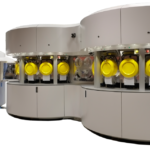This site uses cookies. By continuing to browse the site you are agreeing to our use of cookies.
All
Autoblog
Autocar RSS Feed
Automotive News Breaking News Feed
Automotive World
Autos
Electric Cars Report
Jalopnik
Automotive News | AM-online
Speedhunters
The Truth About Cars
Ouster BlueCity brings physical AI to smart c...
May 6, 2025 0
Tenneco appoints Arvind Chandra as CEO of Ind...
May 6, 2025 0
Automobili Lamborghini continues growth in Q1...
May 6, 2025 0
Kenworth introduces new L770 and L770E refuse...
May 6, 2025 0
All
All Stories
All Stories
BioPharma Dive - Latest News
Breaking World Pharma News
Drugs.com - Clinical Trials
Drugs.com - FDA MedWatch Alerts
Drugs.com - New Drug Approvals
Drugs.com - Pharma Industry News
FDA Press Releases RSS Feed
Federal Register: Food and Drug Administration
News and press releases
Pharmaceuticals news FT.com
PharmaTimes World News
Stat
What's new
New technology facilitates delivery of advanc...
May 4, 2025 0
A candidate drug dismantles a metabolic barri...
May 4, 2025 0
Fungi dwelling on human skin may provide new ...
May 4, 2025 0
All
Breaking DefenseFull RSS Feed – Breaking Defense
DefenceTalk
Defense One - All Content
Military Space News
NATO Latest News
The Aviationist
War is Boring
War on the Rocks
free
May 6, 2025 0
NATO releases strategy to use data for enhanc...
May 5, 2025 0
NATO Secretary General meets Mr Johann Wadeph...
Apr 30, 2025 0
NATO experts discuss nuclear deterrence chall...
Apr 29, 2025 0
All
Advanced Energy Materials
CleanTechnica
Energy | FT
Energy | The Guardian
EnergyTrend
Nature Energy
NYT > Energy & Environment
PV-Tech
RSC - Energy Environ. Sci. latest articles
Utility Dive - Latest News
LiNO3‐Based Electrolyte with Fast Kinetics fo...
May 6, 2025 0
Dry Battery Electrode Technology: From Early ...
May 6, 2025 0
Unveiling the Impact of C60–O2 Interaction on...
May 6, 2025 0
Atomic‐Scale Interface Engineering for Robust...
May 6, 2025 0
Author Correction: H<sub>2</sub> and CO<sub>2...
Apr 25, 2025 0
Elucidating mechanisms of change
Apr 25, 2025 0
- Contact
- LIVE TV
- Agriculture
- Automotive
- Beauty
-
Biopharma
- All
- All Stories
- All Stories
- BioPharma Dive - Latest News
- Breaking World Pharma News
- Drugs.com - Clinical Trials
- Drugs.com - FDA MedWatch Alerts
- Drugs.com - New Drug Approvals
- Drugs.com - Pharma Industry News
- FDA Press Releases RSS Feed
- Federal Register: Food and Drug Administration
- News and press releases
- Pharmaceuticals news FT.com
- PharmaTimes World News
- Stat
- What's new
- Defense
- Energy & Water
- Fashion
- Food & Beverage
- Healthcare
- Legal
- Manufacturing
- Luxury
- Medical Devices
- Mining
- Real Estate
- Retail
- Science Journals
- Transport & Logistics
- Travel & Hospitality


















































































































































